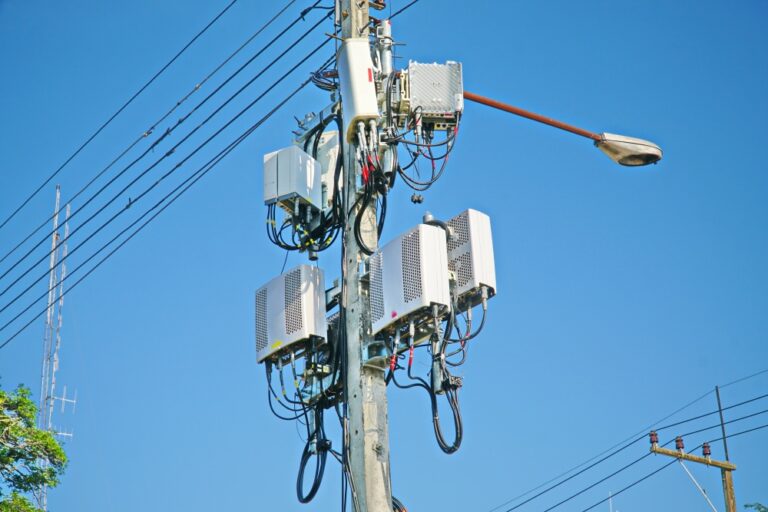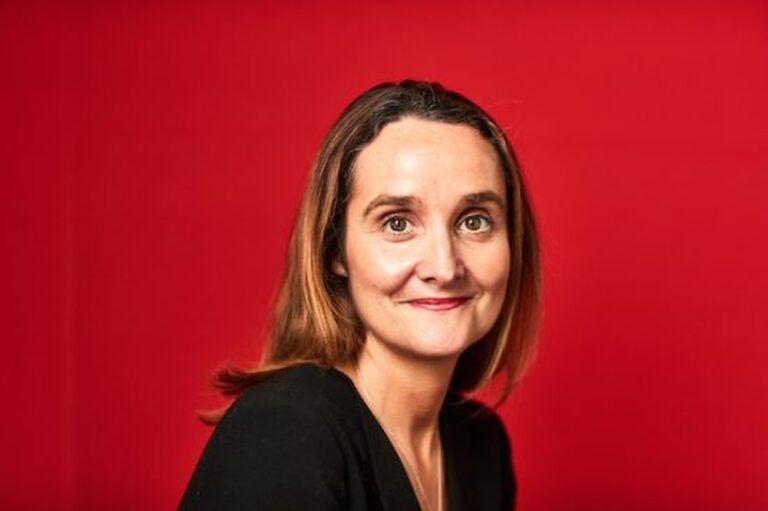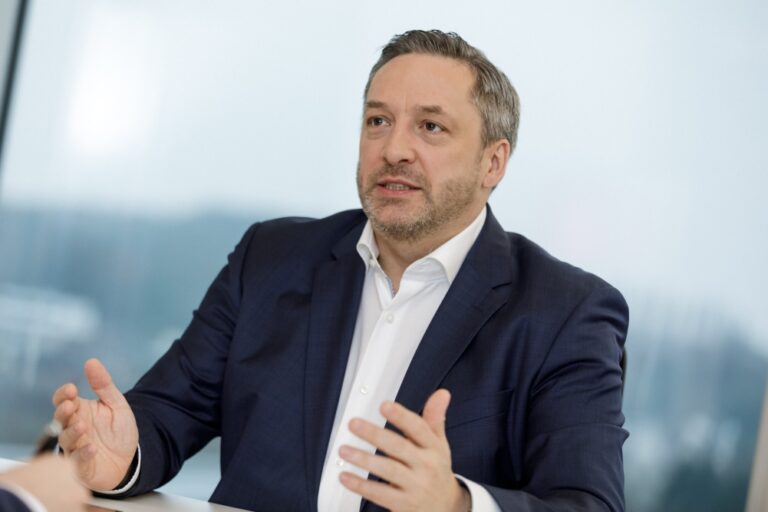Walter Goldenits CTO of Deutsche Telekom’s German operator, Telekom Deutschland, talks about competition and partnerships, and delivering digitisation and 5G with Annie Turner.
Deutsche Telekom (DT) published its Q1 figures in mid-May and raised its guidance as net revenue increased by 32.3% to €26.4 billion compared to last year.
Certainly, the acquisition of Sprint by T-Mobile in the US was a major factor, but German broadband was highlighted as one of the reasons for the success, which is overseen by Walter Goldenits who has been Telekom Deutschland’s CTO since 2017.
The pandemic has catapulted reliable, affordable, fast-enough connectivity to the top of operators’ – and politicians’ – agendas. Operators across Europe have gone into overdrive in their determination to close the digital divide as fast as possible.
Telekom Deutschland’s fibre-based lines totalled 16.3 million at the end of Q1 2021 – that’s 1.5 million more than at the same time the previous year – and the company gained 93,000 net broadband additions in the quarter – up by more than 10,000 on the same period last year.
To put this into context, Germany had 41.0 million households in 2020, according to the National Statistical Office, and like two other of the top four largest economies in Europe (Italy and the UK ) it was relatively slow getting started with its full-fibre broadband deployment.
In September 2018, according to the FTTH Council Europe’s research, carried out by iDate and published in March 2019, Germany’s full-fibre penetration rate (that is FTTB and FTTH) stood at 2.3% (and is now 4.9%) compared with top-ranking Latvia at 50.3% (now ranked ninth with 46.1%). The average for the 28 European Union countries included in the ranking was 13.9% and now the average ranking for the EU 27 plus the UK is 20.5%.
Competing infrastructures
Care is needed, though, with the FTTH Council Europe’s figures (latest here), which paint something of a slanted picture of countries’ digital infrastructure, as it doesn’t include out cable- and mobile-based broadband, or part-copper offers like fibre to the cabinet (FTTC), VDSL and so on.
So will Telekom Deutschland compete in areas that already have gigabit coverage provided by cable networks like Vodafone’s or concentrate on areas lacking good digital infrastructure? Goldenits says, “We are rolling out fibre wherever there is a need for future-proof infrastructure – and we are convinced that this is the case everywhere in Germany. In the cities as well as in rural areas; regardless of existing cable infrastructure.”
He states that pure fibre connections enable stable gigabit downloads and so are the next stage in the technological evolution of fixed networks. “That is why,” he says, “we have set ourselves the goal of working with other providers to offer all households and businesses in Germany an FTTH connection by 2030.”
He continues, “Digitisation also means competition between different infrastructures. We firmly believe in FTTH and… that people in Germany appreciate the benefits of this technology.”
Goldenits claims that Telekom Deutschland is driving the digitisation in Germany, observing, “We are investing more than ever in our infrastructure and will increase our annual fibre CapEx from the current €1.5 billion to €2.5 billion by 2024. Overall, we have steadily increased our investments in recent years.”
Partnering for fibre
However, he acknowledges, “We cannot manage the fibre rollout for the entire country on our own. That’s why we said, ‘Part comes from us, part must come from competitors.’ Our next milestone is to offer 10 million households an FTTH connection by the end of 2024 and from then on enable at least 2.5 million more households per year to connect to our fibre network.
“In our view, fibre roll-out is a task for society as a whole, involving citizens, politicians and companies working toward a common goal.”
That’s why he says his company is willing to cooperate with different partners in different regions and to consider new approaches.
He points to Telekom Deutschland’s joint venture, Glasfaser Nordwest, with EWE as an innovative, functioning model, and to wholesale contracts with competitors such as Telefonica, Vodafone and 1&1 as contributions to successful fibre roll-out. Also, the operator constantly reviews external funding as an additional option.
As we went to press, it was reported that following the example of BT in the UK, KPN in the Netherlands and Telefonica in Germany, Telekom Deutschland is looking for an investor to help it fund the fibre build-out. The operator declined to comment on the report.
Mobile on the up
In March Telekom Deutschland announced that 98.7% of the population in Germany has LTE coverage, but how will this mesh with its 5G coverage and strategy, and is the LTE coverage dense enough?
Goldenits remarks, “We already cover 80% of the German population with 5G and are steadily building more. The technology is available in more than 5,000 cities, but for me mobile roll-out is not just about technology standards and leadership, but more about customer experience.
“With an intelligent combination of different standards, we will deliver to all our customers a network fitting [for] their handhelds and behaviours. Based on these requirements, we will continue to expand and supplement our networks, especially in rural areas. 4G and 5G will go hand in hand in that way, but 5G usage will grow more in the coming years.”
Telekom Deutschland appears to be doing something right: it won 167,000 new mobile contract customers in the first quarter of 2021 compared with 140,000 one year earlier. However, income was slightly down year on year – by 0.8% – due in large part to lost roaming income because of lockdowns. Yet even with that loss of income, predictions are that the estimated growth rate would have been just 1.2%.
Is Telekom Deutschland looking to 5G to boost that growth from consumers and, if so, using which applications? Goldenits says, “Gaming and AR are for sure applications that will boost 5G – just have a look at our new app for the Euro 2020 [football tournament]. You can place avatars of our German football team next to you and wherever you want.”

5G in the core
He says 5G standalone is the next step, adding, “In February of this year, we broke new technological ground by demonstrating stable data connections with very low latency via 5G standalone antennas and our standalone core network.
“Telekom carried out a video call without interruption in a pure 5G environment. The call was made via the standalone antenna in Garching to Bamberg in Telekom’s first 5G standalone core network and from there to Bonn. In addition to the stable data connection, very low latency was realised in the live network. In Garching, the response time was 13 milliseconds.”
The 5G technology currently deployed in Germany is based on the 5G Non-Standalone (5G NSA) network architecture and Goldenits says the widespread introduction of 5G standalone depends on when and how the necessary end devices will be available on the market in sufficient numbers to meet customers’ need. Whatever happens, “We are prepared,” he says.
So what’s Telekom Deutschland’s approach to working in ecosystems and pursuing platform-based operational and business models to leverage the new capabilities of 5G for enterprises? Goldenits states, “For 5G to become a flexible, service-enabling platform, Open APIs will be key in two ways.
“One, in terms of importing innovation from outside to optimise our TCO [total cost of ownership] and enhance our service, and the other in a sense that we can expose selected capabilities within our telco network to the outside as network-as-a-service.
“For example, what used to be a telco-specific network capability can be opened up to other parties, be it to developers, enterprises or other service providers, via exposure gateways and packaged together with their services. This is particularly true for edge cloud and network slicing: APIs will be key to unlocking the potential of edge cloud and slicing to open up new opportunities for differentiation for telcos.”
Moving to the cloud
In December 2020, Telekom Deutschland signed a seven-year agreement with Microsoft to help develop and execute its cloud and edge strategy. Goldenits doesn’t comment directly on the Microsoft deal, but states, “Edge computing is an essential part of our campus-network offer for business customers. We are the only operator in Germany who can offer not only the connectivity part for enterprise customers, but also a solution approach for their business processes.”
He says, “Our product EdgAir supports high-performance, latency-critical applications. It has an integrated machine learning solution and provides security and data sovereignty for the customers.”
Where do network automation, analytics and AI fit into Goldenits’ strategy? He says, “Our goal is to transform our infrastructure to a new open, cloudified and disaggregated architecture with a simpler, more intelligent and automated production model.”
Telekom Deutschland has had some successes with network automation, such as with its new voice production platform, NIMS, in Germany, which is multi-vendor, open, fully automated and running on the operator’s cloud.
Goldenits says, “It is hyperscaler-like, yet telco grade. Introduction of new product features now only takes three months, compared to 18 months previously. Our ambition is to move all mobile and fixed voice customers across Germany and Europe onto one automation framework.”
Automation in action
Another example of automation in action is the operator’s AI-driven automation for network planning, which has been proven and is now ready to scale. Goldenits explains, “We use vehicles in the street equipped with high tech lasers, which capture 360-degree pictures of surfaces and any type of obstacles in the streets.
“AI software algorithms analyse the captured data in a point cloud. As a result, the planning time of an average fibre rollout area decreases from 25 to only five days. Already the system is deployed in 75% of all new rollout areas.”
Tower strategy
As towers are hot property in Europe, as opposed to a cost when on a telco’s accounts, Deutsche Telekom has put its towers in Germany, Austria and the Netherlands into GD Towers. In May 2021, Deutsche Telekom’s CFO, Christian Illek, said the group wants to split out all its towers in Europe into GD Towers, and is assessing its operating companies in the Czech Republic and Slovakia to see if their towers are viable additions.
Goldenits says, “We created new growth by separating towers [in Germany, Austria and the Netherlands] and managing them actively.” He claims that GD Towers has the largest portfolio in Europe after Cellnex: in 2020, there were 56,000 sites plus additional DT tower assets. Goldenits says, “It’s growing and had additional 5,000 sites over the period from 2017 to 2020. Deutsche Telekom continues its active, value-driven portfolio management as in previous years. In light of this, the Group regularly assesses its investments for possibilities to further increase their value.”
Towers aside, how much does Telekom Deutschland gain from being part of a group of opcos in multiple European countries? For instance, is it able to leverage greater scale for procurement and is the experience and knowledge gained in one market transferred to others?
According to Goldenits, “There are many examples of close and fruitful international cooperation within DT. In technology and innovation for instance, we have various centres of excellence in different countries. They are working for [the] DT group which means all innovation results are available to all subsidiaries.
“Let me give you one of our latest examples: in April we announced a new achievement in 5G backhaul capacity. Here our Greek colleagues from Cosmote were responsible for research and development, together with our partner Ericsson.”
He continues, “In the strategic procurement area we are bundling the demands, sharing procurement benchmarks, and running joint and cross-country tenders. We [leverage scale] in a lot of areas, from network equipment, such as antennas, to our indirect businesses such as travel services or energy.
“However local operations in the multiple European countries remain necessary to better manage the interfaces to the business side, such as the technology or IT departments.
Keeping the momentum
Like so many operators, Telekom Deutschland pulled out all the stops during the lockdowns, but has the pandemic changed the operator’s priorities, or are the priorities the same just with faster execution?
Goldenits replies, “Deutsche Telekom’s fixed network stood and stands for stability in the Corona crisis. The fast connection for households and businesses, and the roll-out strategy of recent years, have paid off in terms of working and learning from home.
“This has encouraged us that our strategy is absolutely right. Bringing fibre to the street cabinets was the first step. By doing so millions of households have benefited from fast internet connections. A total of more than 34 million households in Germany can book a connection with up to 100 Mbps. The second step is now rolling out fibre to the home to bring superfast internet to our customers.”













